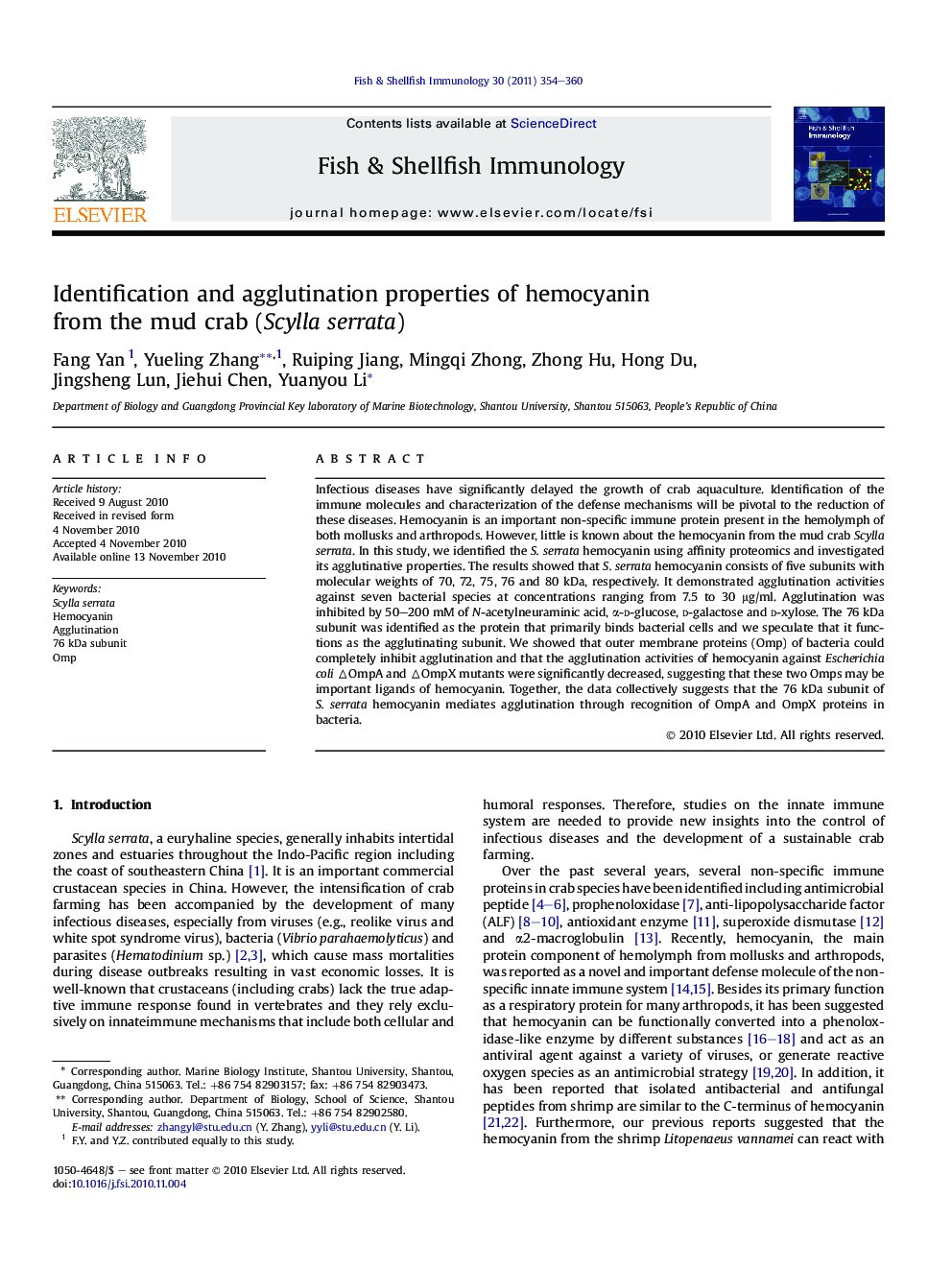| Article ID | Journal | Published Year | Pages | File Type |
|---|---|---|---|---|
| 2432742 | Fish & Shellfish Immunology | 2011 | 7 Pages |
Infectious diseases have significantly delayed the growth of crab aquaculture. Identification of the immune molecules and characterization of the defense mechanisms will be pivotal to the reduction of these diseases. Hemocyanin is an important non-specific immune protein present in the hemolymph of both mollusks and arthropods. However, little is known about the hemocyanin from the mud crab Scylla serrata. In this study, we identified the S. serrata hemocyanin using affinity proteomics and investigated its agglutinative properties. The results showed that S. serrata hemocyanin consists of five subunits with molecular weights of 70, 72, 75, 76 and 80 kDa, respectively. It demonstrated agglutination activities against seven bacterial species at concentrations ranging from 7.5 to 30 μg/ml. Agglutination was inhibited by 50–200 mM of N-acetylneuraminic acid, α-d-glucose, d-galactose and d-xylose. The 76 kDa subunit was identified as the protein that primarily binds bacterial cells and we speculate that it functions as the agglutinating subunit. We showed that outer membrane proteins (Omp) of bacteria could completely inhibit agglutination and that the agglutination activities of hemocyanin against Escherichia coli ▵OmpA and ▵OmpX mutants were significantly decreased, suggesting that these two Omps may be important ligands of hemocyanin. Together, the data collectively suggests that the 76 kDa subunit of S. serrata hemocyanin mediates agglutination through recognition of OmpA and OmpX proteins in bacteria.
